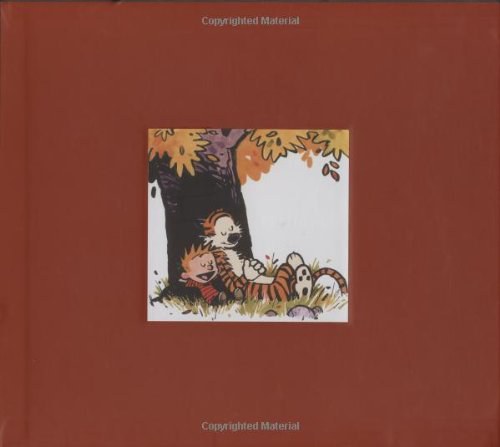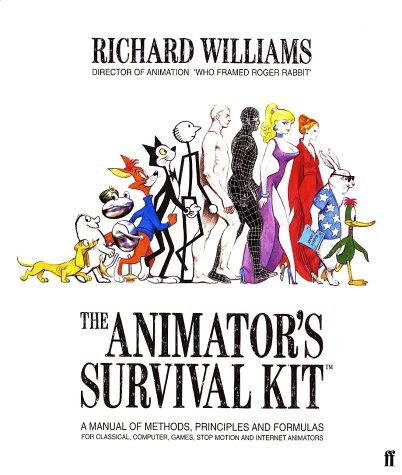
Alfred V·Aho《Compilers》
书刊介绍
内容简介
This book provides the foundation for understanding the theory and pracitce of compilers. Revised and updated, it reflects the current state of compilation. Every chapter has been completely revised to reflect developments in software engineering, programming languages, and computer architecture that have occurred since 1986, when the last edition published. The authors, recognizing that few readers will ever go on to construct a compiler, retain their focus on the broader set of problems faced in software design and software development. Computer scientists, developers, and aspiring students that want to learn how to build, maintain, and execute a compiler for a major programming language.
作品目录
1 Introduction
1.1 Language Processors
1.2 The Structure of a Compiler
1.3 The Evolution of Programming Languages
1.4 The Science of Building a Compiler
1.5 Applications of Compiler Technology
1.6 Programming Language Basics
1.7 Summary of Chapter 1
1.8 References for Chapter 1
2 A Simple Syntax-Directed Translator
2.1 Introduction
2.2 Syntax Definition
2.3 Syntax-Directed Translation
2.4 Parsing
2.5 A Translator for Simple Expressions
2.6 Lexical Analysis
2.7 Symbol Tables
2.8 Intermediate Code Generation
2.9 Summary of Chapter 2
3 Lexical Analysis
3.1 The Role of the Lexical Analyzer
3.2 Input Buffering
3.3 Specification of Tokens
3.4 Recognition of Tokens
3.5 The Lexical-Analyzer Generator Lex
3.6 Finite Automata
3.7 From Regular Expressions to Automata
3.8 Design of a Lexical-Analyzer Generator
3.9 Optimization of DFA-Based Pattern Matchers
3.10 Summary of Chapter 3
3.11 References for Chapter 3
4 Syntax Analysis
4.1 Introduction
4.2 Context-Free Grammars
4.3 Writing a Grammar
4.4 Top-Down Parsing
4.5 Bottom-Up Parsing
4.6 Introduction to LR Parsing: Simple LR
4.7 More Powerful LR Parsers
4.8 Using Ambiguous Grammars
4.9 Parser Generators
4.10 Summary of Chapter 4
4.11 References for Chapter 4
5 Syntax-Directed Translation
5.1 Syntax-Directed Definitions
5.2 Evaluation Orders for SDD's
5.3 Applications of Syntax-Directed Translation
5.4 Syntax-Directed Translation Schemes
5.5 Implementing L-Attributed SDD's
5.6 Summary of Chapter 5
5.7 References for Chapter 5
6 Intermediate-Code Generation
6.1 Variants of Syntax Trees
6.2 Three-Address Code
6.3 Types and Declarations
6.4 Translation of Expressions
6.5 Type Checking
6.6 Control Flow
6.7 Backpatching
6.8 Switch-Statements
6.9 Intermediate Code for Procedures
6.10 Summary of Chapter 6
6.11 References for Chapter 6
7 Run-Time Environments
7.1 Storage Organization
7.2 Stack Allocation of Space
7.3 Access to Nonlocal Data on the Stack
7.4 Heap Management
7.5 Introduction to Garbage Collection
7.6 Introduction to Trace-Based Collection
7.7 Short-Pause Garbage Collection
7.8 Advanced Topics in Garbage Collection
7.9 Summary of Chapter 7
7.10 References for Chapter 7
8 Code Generation
8.1 Issues in the Design of a Code Generator
8.2 The Target Language
8.3 Addresses in the Target Code
8.4 Basic Blocks and Flow Graphs
8.5 Optimization of Basic Blocks
8.6 A Simple Code Generator
8.7 Peephole Optimization
8.8 Register Allocation and Assignment
8.9 Instruction Selection by Tree Rewriting
8.10 Optimal Code Generation for Expressions
8.11 Dynamic Programming Code-Generation
8.12 Summary of Chapter 8
8.13 References for Chapter 8
9 Machine-Independent Optimizations
9.1 The Principal Sources of Optimization
9.2 Introduction to Data-Flow Analysis
9.3 Foundations of Data-Flow Analysis
9.4 Constant Propagation
9.5 Partial-Redundancy Elimination
9.6 Loops in Flow Graphs
9.7 Region-Based Analysis
9.8 Symbolic Analysis
9.9 Summary of Chapter 9
9.10 References for Chapter 9
10 Instruction-Level Parallelism
10.1 Processor Architectures
10.2 Code-Scheduling Constraints
10.3 Basic-Block Scheduling
10.4 Global Code Scheduling
10.5 Software Pipelining
10.6 Summary of Chapter 10
10.7 References for Chapter 10
11 Optimizing for Parallelism and Locality
11.1 Basic Concepts
11.2 Matrix Multiply: An In-Depth Example
11.3 Iteration Spaces
11.4 Affine Array Indexes
11.5 Data Reuse
11.6 Array Data-Dependence Analysis
11.7 Finding Synchronization-Free Parallelism
11.8 Synchronization Between Parallel Loops
11.9 Pipelining
11.10 Locality Optimizations
11.11 Other Uses of Affine Transforms
11.12 Summary of Chapter 11
11.13 References for Chapter 11
12 Interprocedural Analysis
12.1 Basic Concepts
12.2 Why Interprocedural Analysis?
12.3 A Logical Representation of Data Flow
12.4 A Simple Pointer-Analysis Algorithm
12.5 Context-Insensitive Interprocedural Analysis
12.6 Context-Sensitive Pointer Analysis
12.7 Datalog Implementation by BDD's
12.8 Summary of Chapter 12
12.9 References for Chapter 12
A A Complete Front End
A.1 The Source Language
A.2 Main
A.3 Lexical Analyzer
A.4 Symbol Tables and Types
A.5 Intermediate Code for Expressions
A.6 Jumping Code for Boolean Expressions
A.7 Intermediate Code for Statements
A.8 Parser
A.9 Creating the Front End
B Finding Linearly Independent Solutions
Index
相关推荐
-

开源硬件创客
《开源硬件创客》内容简介:本书共分18章,前3章是本书的基础章节,主要介绍了树莓派的一些基本情况和基本操作,来让读者了解树莓派
-

基于投资者关系视角的公司品牌研究
《基于投资者关系视角的公司品牌研究》内容简介:上市公司的价值取决于产品市场和资本市场两方面的影响。其在产品市场上取得的品牌
-

学前儿童创意美术活动设计
《学前儿童创意美术活动设计》内容简介:本书以3~6岁幼儿为对象,以美术创作基本元素为纲、案例活动设计为纬,系统、科学地引导幼儿
-

系统安装、维护及故障排除实战
《系统安装、维护及故障排除实战》内容简介:本书由资深计算机硬件工程师精心编写,讲解了安装操作系统前的准备、分区与格式化硬盘
-

日本对中国东北的殖民统治
《日本对中国东北的殖民统治》内容简介:九一八事变后,日本在中国东北地区扶植伪满政权,并以之为工具,把东北地区的政治、经济、
-
![[美] 比尔·盖茨《未来时速-数字系统与商务新思维》](http://oss.shudanhao.com/caiji/chazidian/2023/4323.jpg)
[美] 比尔·盖茨《未来时速-数字系统与商务新思维》
比尔・盖茨继《未来之路》后又一新作快速发展的未来将会怎样?今天的管理者们能做什么?比尔・盖茨在《未来时速》中提出了一个新
-

机器学习及其应用2015
机器学习及其应用2015 本书特色 高新波、张军平主编的《机器学习及其应用 (2015)》是对第十一届和十二届中国机器学习及其 应用研讨会的一个总结,共邀请了会...
-

数据库原理及应用(SQLServer2005)-数学指导与习题解答
数据库原理及应用(SQLServer2005)-数学指导与习题解答 本书特色 《数据库原理及应用(SQL Server 2005):教学指导与习题解答》是国家级...
-

考虑中断风险的供应链优化模型和算法研究
考虑中断风险的供应链优化模型和算法研究 本书特色 本书以现代物流的新现象——中断风险为背景,阐述了供应链网络优化中的多级决策、多重指派、...
-

Scratch趣味创意编程
《Scratch趣味创意编程》内容简介:本书以Scratch软件为平台载体,以学生喜爱的任务活动为形式,旨在培养学生的创新意识和实践能力
-

马克思主义中国化进程中经典著作编译与传播研究(1949—1978)
《马克思主义中国化进程中经典著作编译与传播研究(1949—1978)》内容简介:新中国成立70年以来,马克思主义经典著作在中国的编译
-

AutoCAD 2016中文版建筑设计师——装潢施工设计篇
AutoCAD 2016中文版建筑设计师——装潢施工设计篇 本书特色 本书以敏锐的视角、简练的语言,并结合室内装潢业的特点,运用大量的室内装潢施工设计实例,对A...
-

计算机软件技术基础(第3版)
计算机软件技术基础(第3版) 内容简介 本书是计算机基础教材,全书较系统、通俗地介绍了计算机软件技术的基础知识和常用的系统软件。内容包括数据结构、操作系统、数据...
-

机器人爱好者-第2辑
机器人爱好者-第2辑 本书特色 本书是美国机器人杂志《Servo》精华内容的合集。 全书根据主题内容的相关性,进行了精选和重新组织,分为5章。 第1章介绍了机器...
-

竹简《文子》研究之回顾与反思
《竹简《文子》研究之回顾与反思》内容简介:本书共分五个章节,依次为:一、竹简《文子》研究;二、竹简《文字》成书年代反思;三
-

姚剑清《简明数字信号处理》
数字信号处理(DSP)广泛应用于通信、电子、自动控制等方面,并日益显示出其重要性。本书旨在帮助更多的工程师掌握DSP的基本概念
-

轻松学习C程序设计-揭开计算机与程序设计的奥秘
轻松学习C程序设计-揭开计算机与程序设计的奥秘 本书特色 尽自己*大能力写一本比较轻,松颖,清晰,透彻,有价值的计算机科学入门是我的夙愿;把真正掌握计算奥秘和学...
-

Android开发实战
《Android开发实战》内容简介:本书由一线资深软件开发工程师基于目前广泛使用的Android 6/7和Android Studio 2.x开发环境倾力编撰
-

W·Jason Gilmore《Beginning PHP and MySQL 5》
BeginningPHPandMySQL5:FromNovicetoProfessional,SecondEditionofferscomprehensivei...
-

二手房装修改造常犯的110个错误
《二手房装修改造常犯的110个错误》内容简介:每个做过二手房装修改造的人都有这样的经历,完成装修后,发现由于当初不了解关于装修





